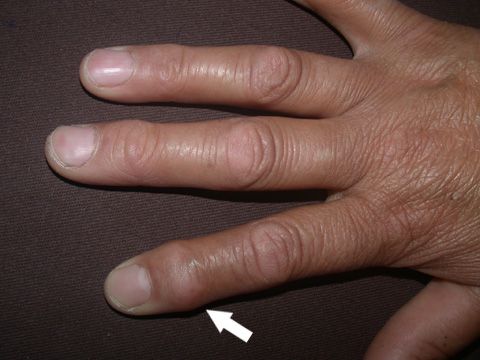RHEUMATOID ARTHRITIS
Rheumatoid arthritis is an autoimmune ( type of diseases in which the immune system fights against the body’s own tissues) disease in which inflammation occurs on symmetric joints, including the hand and foot joints, and swelling, pain and causing resulted damage in joints in time.
Rheumatoid arthritis can be diagnosed with various symptoms. The main cause is still unknown. Genetic tendency and many other factors may create (triggers) the autoimmune reaction. The disease occurs by 1% in public and occurs 2 or 3 times more frequently in females when compared to males. It usually arises in between the ages of 25-50, which, however, may also occur in the other ages. With treatment, the disease may recede in some patients. Out of four people’s, the symptoms of three people may decrease. However, gradual functional loss (loss of mobility) may develop in every single person out of ten after all. In this disease, the autoimmune system tends toward tissues covering the surface of joints. The bonds of cartilage, bone and joints erode in time and joints degrade on different levels consequently.

Rheumatoid arthritis can suddenly appear more than only one joint at the same time with swelling, pain and inflammation. It mostly starts with silence but affects various joints. If a joint with stiffness occurs on either left or right side of the body, then an inflammation appears on the same joint oppositely. It is typical that it starts with the small joints like fingers, toes, wrist, elbow and ankle. Joints with inflammation have frequent stiffness and pain after waking up or a long time of immobility. Some patients may feel tired and weak in the afternoon. The affected joints may have deformations by getting larger. Contractures develop in some joints and stay in a certain position that can’t be opened. Fingers deviate towards the little finger. Carpal tunnel syndrome may occur on the swelled wrist. Cysts that may occur behind the knee, when burst, can cause swelling and pain on feet. In the 30-40 % of patients, generally in locations near the affected joints, nodules arise under the skin (figure 1). Rheumatoid arthritis, with a mild fever, may also cause inflammations named vasculitis within the vessels. Thus, nerve injury and foot ulcers can be seen. As a consequence of the inflammation of pleura, pericarditic or scar formation may lead to a painful lung, difficult respiration and to the disorder of heart’s function.
To distinguish Rheumatoid arthritis from other diseases causing arthritis is sometimes difficult. Patients with following four criteria are likely to have Rheumatoid arthritis.
- Morning stiffness lasts more than 1 hour. (continued at least for 6 weeks)
- Inflammation on 3 or more joints (continued at least for 6 weeks)
- Arthritis of joints on hand, wrist and fingers (continued at least for 6 weeks)
- The presence of rheumatoid factor in blood
- Typical changes on radiography
Laboratory tests, examination of joint fluids or sometimes biopsy may be required for diagnosis. The blood erythrocyte sedimentation rate increases in every 9 /10 patients. Most patients have mild anaemia and white blood cell number also rarely decreases. Most of patients with Rheumatoid arthritis have distinctive antibodies (rheumatoid factor) in their blood. However, an increase in the rheumatoid factor in all patients may not be determined or all patients with high rheumatoid factors may not have Rheumatoid arthritis. This could be still positive without being the disease (RA) for patients with chronic liver diseases and in some infections (for some people). A high rate of rheumatoid factor is connected with the degree of Rheumatoid arthritis.
The treatment is performed in a multi way. Besides pharmacological treatment to patients, training, suggestions for relaxation and exercising, special supportive tools that stop being dependent on one’s supervision and surgical treatments in advanced cases could be possible. The treatment serves for repressing the inflammation period, activating the patient, preventing the stiffness and pain and generally to reduce the complaints, but cannot finish the disease at all. As Rheumatoid arthritis, when not treated, may cause permanent functional loss, the treatment is required to be guided by a specialist doctor.
Poli-arthritis (rheumatism with more than one symptom) occurs in females with the age 20-60, which starts as bilateral and symmetrical and stiffens up wrist or matacarpophalangeal joints. Synovial inflammation deforms the joint progressively. Cartilage, joint capsule, ligaments are damaged progressively. Stiffening up the sinoviyal tissues of extensor and flexor tendons on hand and wrist level, rheumatoid synovitis causes the tendon of ruptures on long time view. Extensor tendons stiffen up more when compared to flexor tendons. Tendon ruptures mostly occur on the tendon which lifts the thumb up. Shape deformations happen on hand and wrist as a consequence of Rheumatoid arthritis.
For the swellings of rheumatoid joint that don’t respond to pharmacological treatment, synovectomy is applied to prevent the joint damage. Tenosynovectomy is applied to prevent the joint ruptures. In extreme joint damages, the joint could be completely removed and substituted with prosthesis applications (especially the trapezo-metacarpal joint and metacarpalphalangeal joint). To the joints (especially thumb metacarpofalangeal joint) that are unable to be applied prosthesis applications, the freezing process could be applied.








